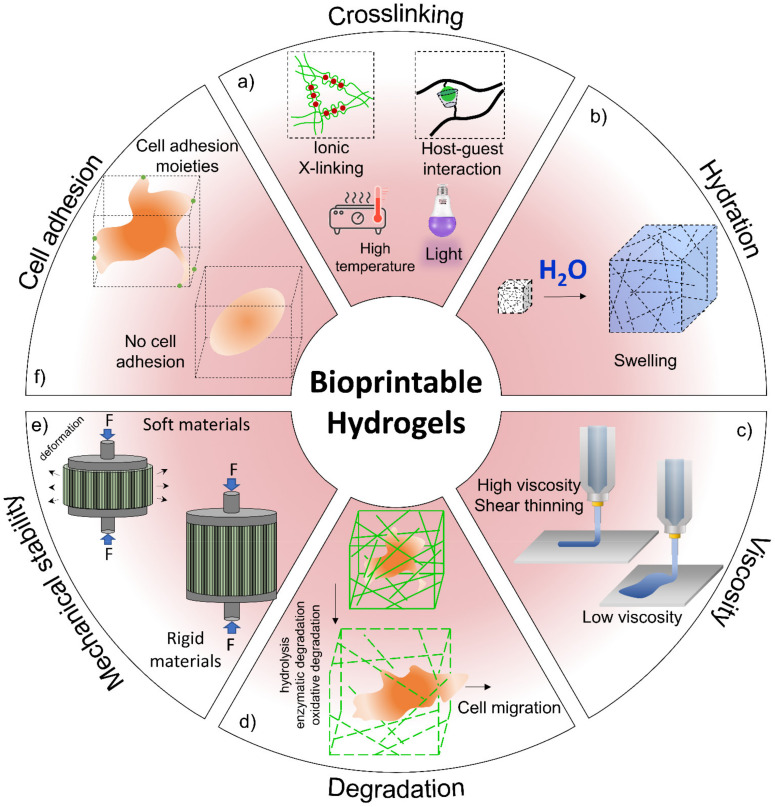Figure 9.
Hydrogel properties in bioprinting. (a) The crosslinking mechanism is related to polymer types that impact cell viability and structure properties. (b) Hydration of a hydrogel system facilitates nutrients and wastes transport within a printed structure. (c) Cell adhesion that supports cell proliferation and migration can be controlled by changing the polymer type. (d) Degradation mechanisms can influence cellular migration. (e) The durability of 3D printed structures is essential to mimic native tissue biomechanical properties and to retain the shape of constructs during cellular growth. (f) Viscous solutions can suspend and protect cells from shear stress inside an extrusion nozzle and reduce flowability of hydrogels after printing (low viscosity solutions can avoid clogging; however, cell settling may occur).

